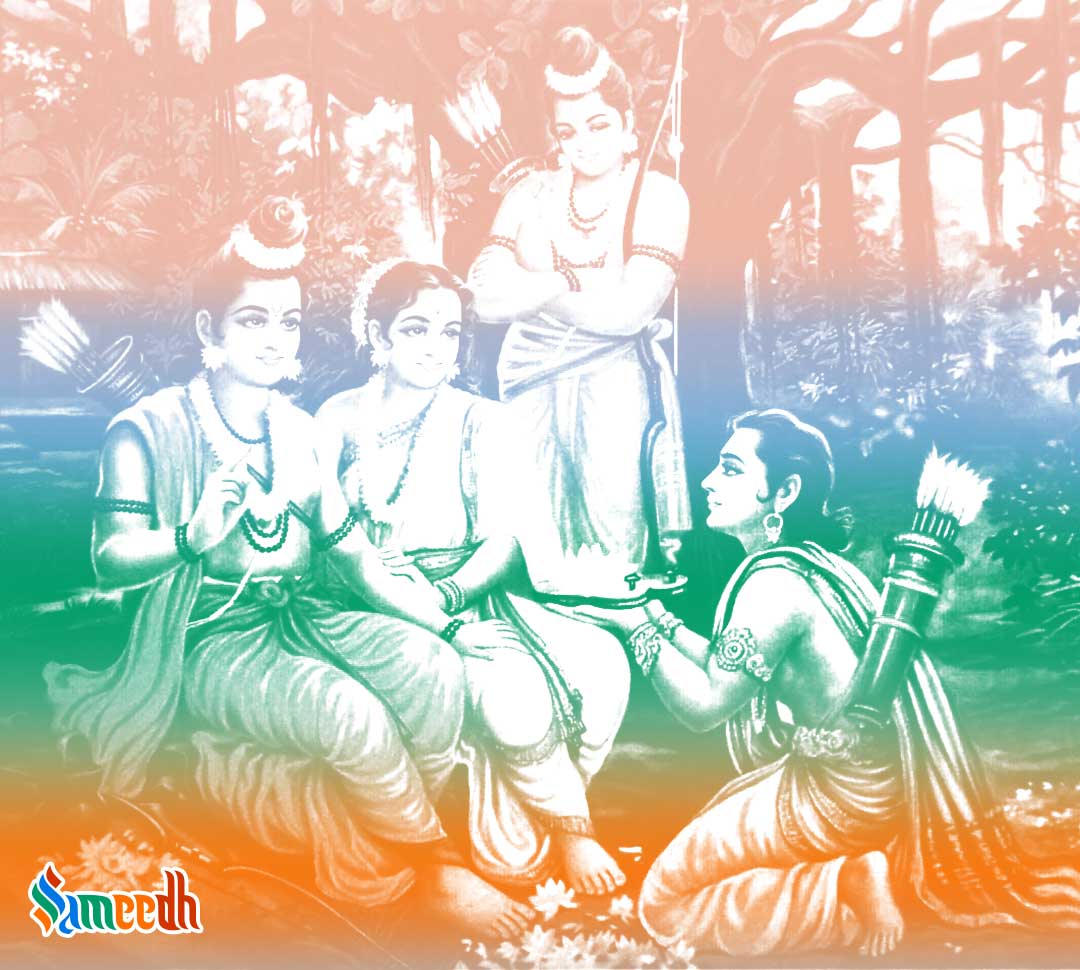This blogpost discusses one of the most important figures in the Indian mythology, Bharat.

Bharat reverently accepts Rama’s sandal, which he will place on the throne during his regency; Image Source: Bazaar Art
EARLY LIFE
Born to King Dushyant
Bharat is known as the direct descendant of the Lunar dynasty which is based on the lineage of moon-based deities in the Indian mythology. The concept of the Kshatriya or the warrior aristocracy is associated with the Lunar Dynasty. This dynasty also has the emergence of God Krishna through the Yadavansh lineage. The mention of Bharat in both Ramayan and Mahabharat shows how important his role was in the build up of Indian mythology. He was born to the King Dushyant who was a son of Ilina and Rathantara. He was the ancestor of the famous Kuru dynasty. King Dushyant during one of his hunting trips met Shakuntala and fell in love. They married and gave birth to their son, Bharat. According to other sources of mythology, due to a course by the sage Durvasa, King Dushyant forgot Shakuntala and was only able to recover his memory of her after he was presented the ring he gave her.
LIFE EVENTS AND CONTRIBUTION TO SOCIETY
A courageous child
According to several accounts and tales, Bharat was a courageous child and many accounts tell tales of his courage and acts of bravery. One of the most famous and narrated events in the life of Bharat’s childhood was Bharat counting the teeth of tigers and lions by opening their mouths. This tale became very popular and was narrated to tell how brave Bharat was even during his childhood. He was also called a Chakravartin or an ideal universal ruler.
LITERATURE PUBLISHED IN
An important subject of Kalidas’s literary work
Bharat gets a beautiful mention in the exemplary and most popular work of Kalidas, Abhijanshakuntalam. This literary work details how the parents of Bharat, Dushyant and Shakuntala met and fell in love. It accounts that due to a curse by Sage Durvasa on Shakuntala, King Dushyant forgets about Shakuntala. Shakuntala has to wait and gives birth to their son, Bharat during this time. The tale accounts for the meeting of King Dushyant and Shakuntala when Dushyant witnesses a young six year old Bharat counting the teeth of a cub by opening his mouth. This sight surprises Dushyant and he enquires about Bharat’s parents only to realise that he is his son. He is given the name Bharat and this is where the name Bharat Varsh came up for the nation of India. This marks the point where the tales of Bharat’s courage took prominence and popularity. Many such accounts are present in the mythology which detail his exceptional courage.
Bharat gets a mention in Rig Veda, Mahabharat as well as Ramayan. His descendants are the Kauravs and the Pandavas who play an important role in the epic of Mahabharat.
Bharat, the king who gave India its identity
The unique lineage, acts of courage and exceptional life, led Bharat to be known as one of the Chakravartin or the ideal universal ruler. He became one of the emperors who ruled the largest area of India and conquered many new territories. His excellence in administration and courage won him a lot of respect. His unique life led India to be known by his name, Bharat.
To read about many other such souls of Indian mythology, keep reading blog posts on Sameedh.
